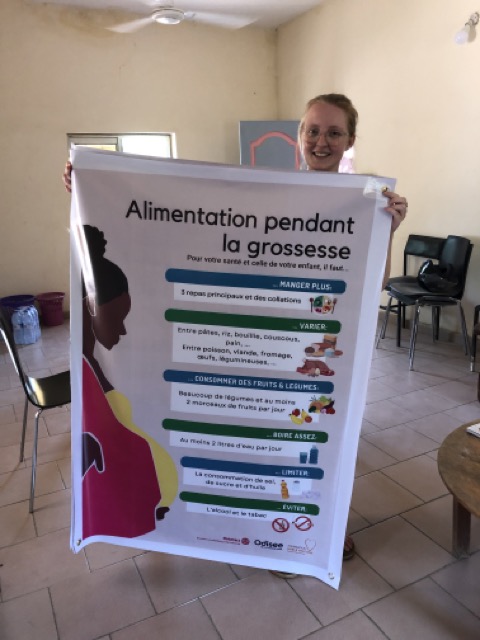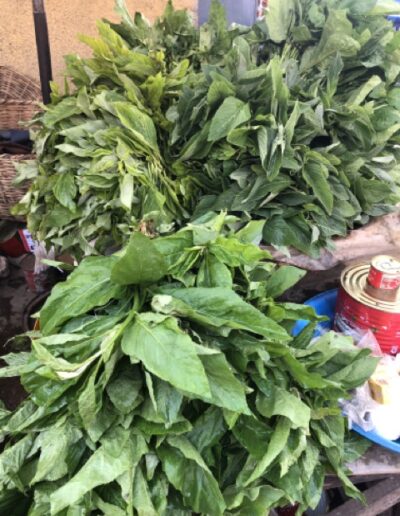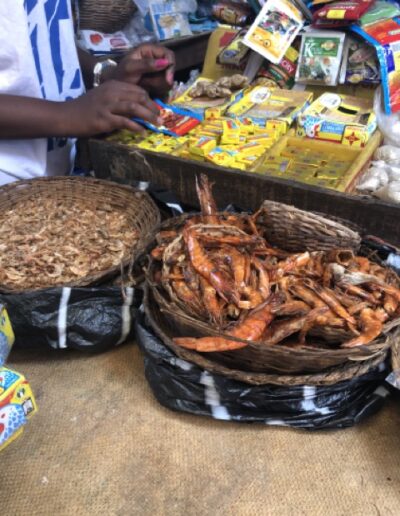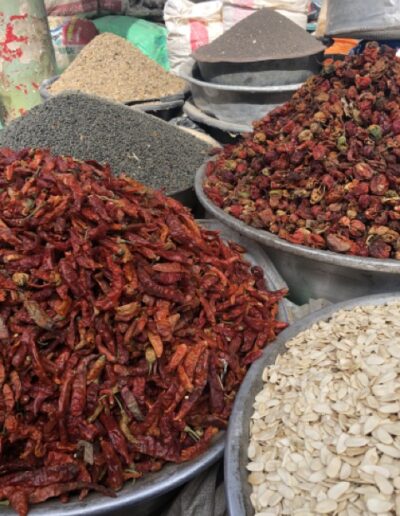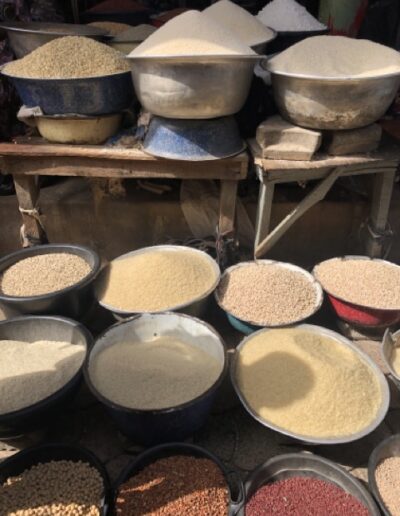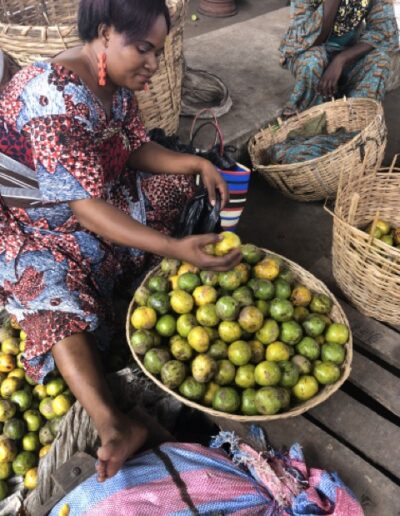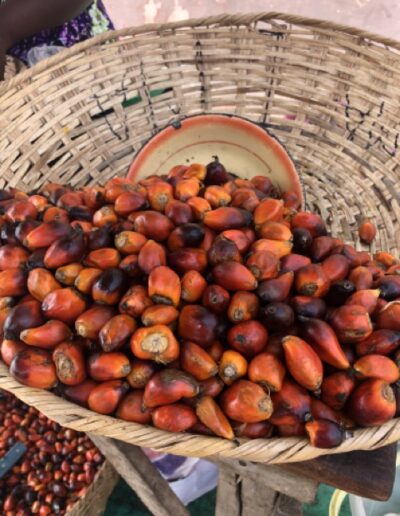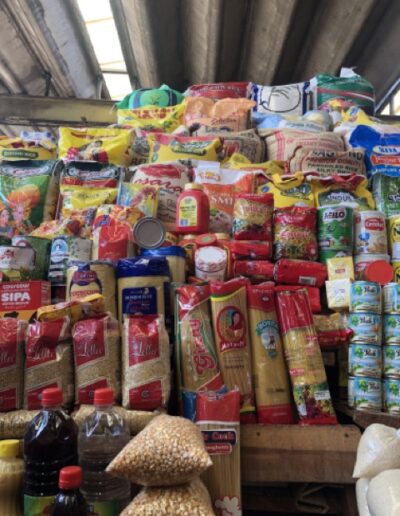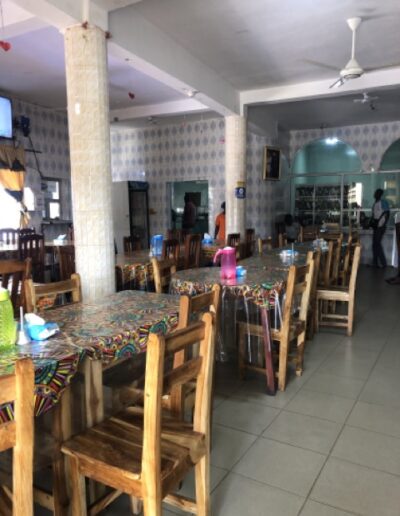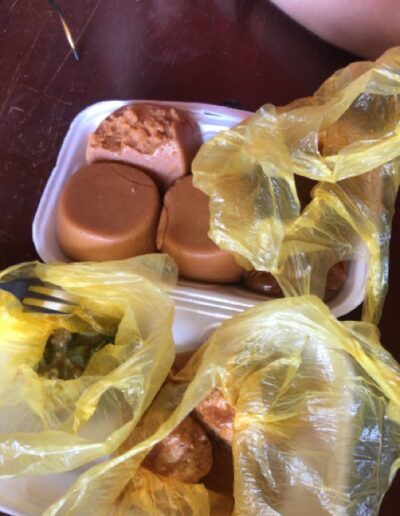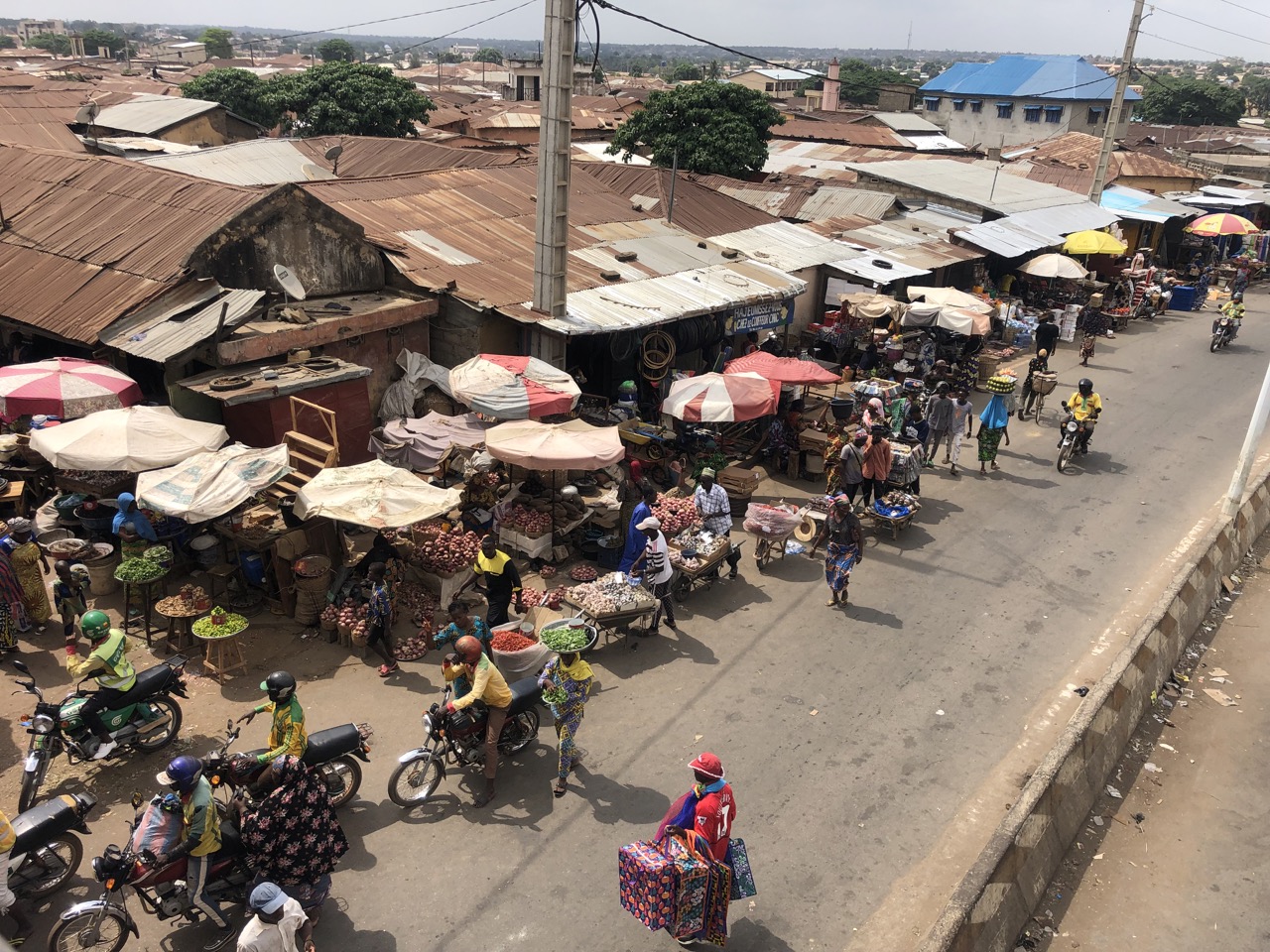
Week 9 – In depth look at Beninese cuisine
Back from our week of holiday, and refreshed from seeing our family, it was time to embark on our penultimate week of the internship! The week was dedicated to better understanding the Beninese cuisine and consisted of visited to local markets and restaurants.
Tour of the markets in Parakou
We spent time in multiple markets around Parakou learning about the local ingredients and what they are typically used for. Compared to what we normally see in the shops in Belgium, the variety of types of grains, legumes, and seeds is overwhelming. A lot of products are available in multiple forms – you might have the fresh vegetable, then a dried version, and finally a powder. The alternative forms allow for longer preservation of the product, especially now at the end of the dry season when cultivation is at low point. The vast number of different types of leafy greens also impressed us, and these are mostly used finely chopped in sauces.
Meat is also available at the market – set out in the hot air with little protection. Some types have been dried to prolong the shelf life. Unfortunately, due to the relatively higher price of meat, it is inaccessible for a lot of the population. The most affordable is around 2500 cfa per kilogram, which is roughly €3.81. Instead, they rely mainly on plant-based sources of protein like soy, legumes, nuts and seeds, and then to a smaller extent dried fish or shrimp and eggs.
At another market, we explored a large area filled with mainly industrial products, most of which are imported. Tinned fish, tomato concentrate, mayonnaise, pasta, couscous, bouillon cubes, etc. are all on offer. It was interesting to visit the markets with a local guide, considering that we had been there in the past but failed to discover entire sections of stalls tucked away down narrow alleys off of the main street!
Visiting local restaurants
We also spent time visiting local restaurants to then see all of these new ingredients in action. At ‘Le secret de la vieille marmite’ one can choose a hot meal from a variety of stews made fresh that day – beef (including tripe) with vegetables, seafood with fish, crab, and shrimp, “meatballs” made from sesame, etc. Normally you pick the meat or other protein source, then a sauce, and finally an accompaniment like ‘pâtes’.
‘Pâtes’ which normally in French would refer simply to pasta, has a different meaning here. In Benin, ‘pâtes’ are balls made from various flours that one pulls apart with their hands and dips in the sauce. The most common we have come across are made from corn (usually fermented), semolina, or cassava. Mashed yam is also another popular accompaniment. We choose a selection of things in small quantities to take away with us, including some “pâtes rouge’ (semolina with tomato sauce); we were warned that for a couple of our choices of sauce that this was not what you ate with it. But our appetites aren’t quite on the level of the locals here, so we decided to stick with one choice of ‘pâtes’ even if it wasn’t the right combination for everything we were trying.
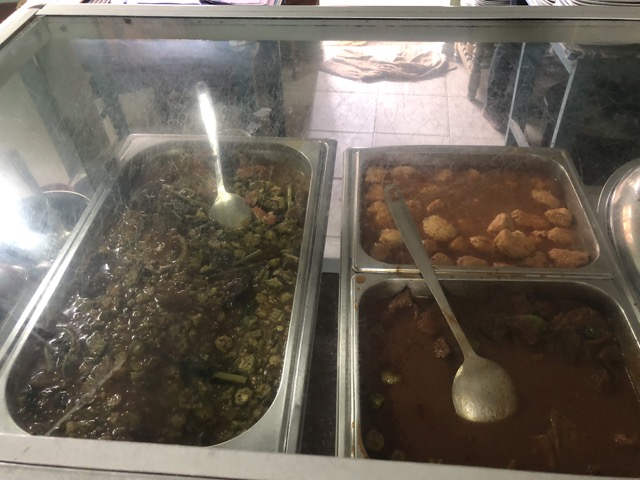
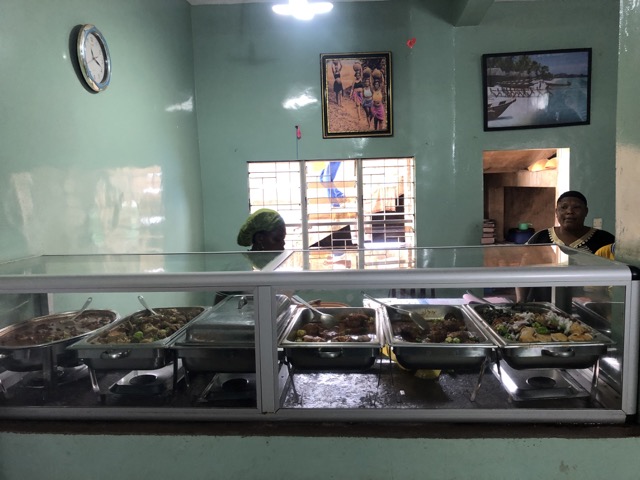
Nutrition for during pregnancy
In addition to visiting the markets and restaurants, we also developed alongside the foundation a poster to be used in the pre-natal consultations at the hospitals and health centres. At the end of the week, we finally received the printed version, and are very happy with how they turned out! We will be printing soon extra versions to provide to the community workers for their village visits and presentations.
In between it all, we have been both busy working on our bachelor’s theses, with a big deadline for feedback coming up. With all that is going on, it is hard to believe that there is just one week left of our time in Benin!
